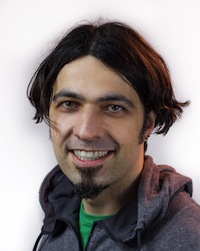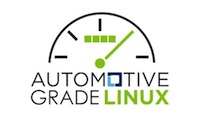 The Linux Foundation hosts numerous Collaborative Projects — independently funded software projects that harness the power of collaborative development in an effort to drive innovation. For these projects, the Linux Foundation provides the essential organizational framework so that participants can focus on innovation and results.
The Linux Foundation hosts numerous Collaborative Projects — independently funded software projects that harness the power of collaborative development in an effort to drive innovation. For these projects, the Linux Foundation provides the essential organizational framework so that participants can focus on innovation and results.
To provide greater insight into some of these projects, we are talking with key contributors about what they do and how they got involved. In this article, we talk with Christian (Chris) Gromm, Principal Software Engineer in the Frameworks & Libraries team at Microchip AIS, about his work with the Automotive Grade Linux project.
Automotive Grade Linux (AGL) is aimed at developing a common, Linux-based software stack for the connected automobile. In June of 2015, the AGL announced the AGL Requirements Specification 1.0 — the industry’s first open in-vehicle infotainment (IVI) software specification that allows automakers and suppliers to collaborate directly with AGL’s community of developers. Just this month, the AGL announced that car makers Subaru, Mitsubishi Motors, Mazda, and Ford had joined the project.
The Linux System for the Connected Car
Chris says, “AGL’s main goal is to create a common Linux distribution to serve the needs of the automotive market. With its growing number of members, AGL today has a huge community of developers from pretty much all over the industry (OEMs, Tier1s, software companies, etc.) that help make AGL the Linux system for the connected car.”
“Additionally, a lot of car makers have joined the AGL, too, to directly inject their requirements for an automotive platform. I think OEMs are the group which will benefit the most from the AGL, because they do not have to re-invent or rebuild (hence saving money) their software stack from scratch with each new model they’re going to release,” Chris explains.
In 2004, Chris joined the engineering team of OASIS SiliconSystems, the inventor of the MOST Network Technology. There, he worked on cryptographic software stacks for DTCP and HDCP, complete reference designs, and firmware for Intelligent Network Controllers (INIC) and tools. Today, however, his main task — in collaboration with other teams — is to develop the MOST Linux driver.
When Microchip joined the Linux Foundation, they became part of the Technical Advisory Board (TAB) mentoring program, and through this, Chris says, “I got the opportunity to have our code reviewed by Greg Kroah-Hartman as a mentor and to push the driver upstream to the mainline kernel.” A previous Linux.com article explained how this one-on-one mentoring process helped put Microchip’s code on the fast track toward acceptance. “It’s great to get all the input,” Chris said in the article. “But without having much experience with the Linux driver project’s mailing list, it’s hard to know what to accept and what to reject. Greg helped us make informed judgments, and we were welcomed into the community.”
He says, “This is the first real open source project that I’ve worked on. It feels great to contribute to a project such as AGL and, of course, to be part of this huge community,” adding that being given the chance to meet Greg Kroah-Hartman in person has fueled his motivation.
As a core team member of the driver development at Microchip, Chris is responsible for providing their driver set to the AGL distribution and maintaining it. Therefore, he attends the weekly technical conference calls to discuss details of the AGL development and is also the maintainer of the AGL’s Automotive Subsystem.
He thinks that the next challenging step for the community is to get AGL out of its fledgling stages and let it evolve into a mature product — specifically, “a product that can be used as a base for the future Linux car.” He adds, “Since AGL has a very strong and growing community and already collaborates with well-known companies, I think this is doable, although it will continue to require some energy.”
Microchip, however, is committed to AGL and is willing to address these needs in terms of the quality of its contributed code and in its role as a subsystem maintainer. Chris finds it especially rewarding that Microchip, and in particular their driver team, were recently named along with the top active developers of the mainline kernel 4.3.
To others who may be interested in participating in the project, Chris offers only encouragement: “If you think you have something to contribute to AGL: do it!” He adds, “I hope that AGL can keep up the momentum that it currently has to become one of the most successful open source projects.”


